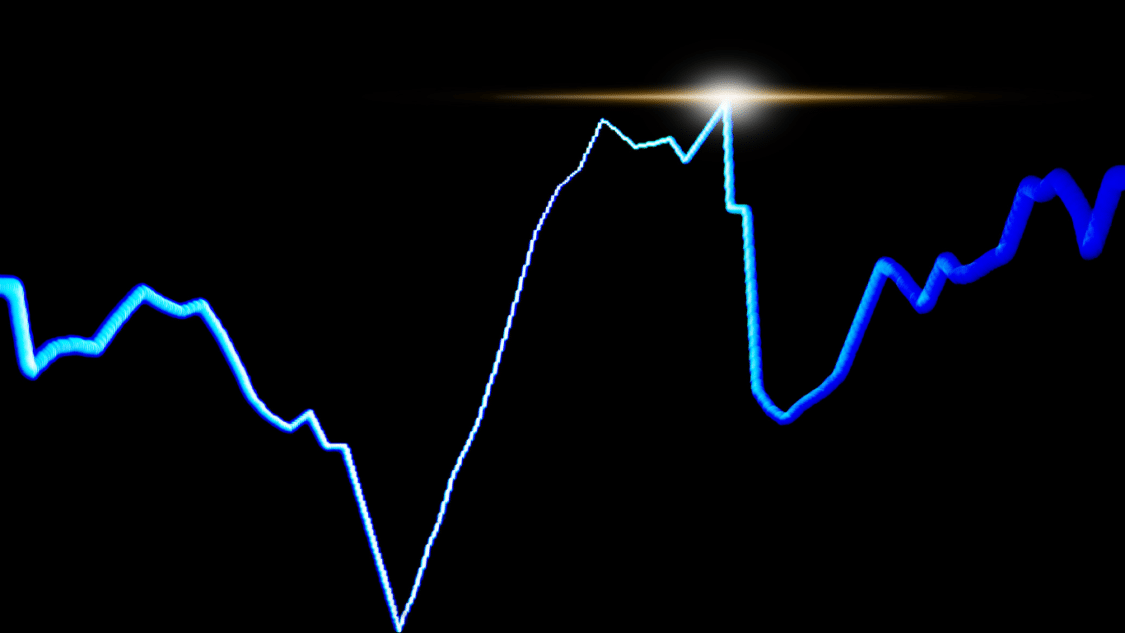In today’s article, we will be learning what swing trading is. Swing trading is a form of trading whose main focus is to capture the market’s swings. The swings refer to the price moves that happen quickly and for short to medium time frames. “Swings” usually last from a few days to several weeks.

What is Swing Trading?
Swing trading is a tactic that focuses on catching brief-to-intermediate price shifts, commonly referred to as “swings,” within the financial market. Swing traders will usually hold their positions for a few days up to several weeks. This strategy aims to profit from price fluctuations due to market trends, momentum, or other factors. Swing traders thoroughly analyse technical indicators, chart patterns, and prevailing market conditions to identify promising entry and exit points for their trading activities.
These traders often look for stocks, currencies, commodities, or other financial instruments that show predictable patterns or trends. They aim to enter a trade when the price is expected to move in their favour and exit before the price backlashes or reaches a predetermined target.
Risk management is an essential notion in swing trading. Swing traders typically set stop-loss orders to limit losses and take-profit levels to secure profits. Swing trading combines technical analysis, market timing, and risk management to take advantage of short-term market price movements. It requires a disciplined approach, a solid trading plan, and continuous monitoring of market conditions.
Where does Swing Trading work best?
Swing trading tactics are more effective in trending markets. The changes can be numerous if there is a strong trend over a more significant period, and swing traders can profit from larger price fluctuations. On the other hand, a consolidating market can make this form of trading more challenging.

Swing trading differs from day trading and buy-and-hold investors. They hold positions for more than day traders and less than buy-and-hold investors. They will also usually go according to the high time frame charts because the strong uptrend or downtrend will be higher. They reference the intraday time frame and look for entry and exit points.

However, the daily chart is the most used one for this form of trading. Swing traders usually profit from price movements that take an extended time because those moves are the largest. They can bring in a significant amount from only a few successful trades. This trading method is used in the stock market and cryptocurrencies. As mentioned above, they will stay in position usually for a few days or weeks, depending on the market and the trade setup.
What are the advantages and disadvantages of Swing Trading?
Advantages of Swing Trading:
Potential for Profits: Swing trading allows traders to capitalise on moderate price shifts that can result in considerable gains. Swing traders seek to benefit from significant returns by exploiting price fluctuations and capturing a trend.
Flexibility: Swing trading presents flexibility in terms of time commitment. On the other hand, day trading needs continuous market monitoring throughout the trading day. Swing trading provides a cost-effective opportunity for traders to capitalise on moderate price shifts that can result in considerable gains. Swing traders seek to benefit from significant returns by price fluctuations by capturing a trend or swing.
Minimising Emotional Stress: Swing traders are less exposed to short-term market fluctuations and action. Swing traders usually hold positions for days to several weeks, allowing for a more relaxed approach than day trading. Swing traders can avoid the emotional strain of split-second decisions in fast-moving markets.
Capturing Trends: Swing traders try to make money by following trends in the market that last for a few weeks or months. They hope to catch significant changes in prices. They can make money by following a trend and keeping the price moving in the same direction.
Disadvantages of Swing Trading:
Risks: Swing traders hold positions overnight, exposing them to potential risks associated with news or events in those hours. Market gaps or abrupt price changes outside trading hours may influence positions and result in unanticipated losses.
Missed Intraday Opportunities: As swing traders aim to capture medium-term trends, they may miss intraday opportunities. Short-term price fluctuations or specific news events may occur within the holding period of a swing trade, which can lead to potentially missing trading opportunities.
Exposure to Market Volatility: This trading method may expose traders to greater market volatility than longer-term investment approaches. Price fluctuations throughout the chosen term may be more sporadic and volatile, which might result in gains and losses.
Discipline and Patience: Trading success is acquired with discipline and patience. Traders looking to succeed must stick to their strategies, follow risk management protocols, and avoid sudden decisions based on short-term market fluctuations.
Transaction Costs: With the frequent trades made by swing traders, transaction costs such as commissions and fees can add up over time. A trader must consider these costs, ensuring they do not significantly eat into potential profits.
Just like any other way of trading, it’s very important for swing traders to know all the risks and to make a good plan that suits their money goals and how much risk they can handle. To be successful in swing trading, it’s essential to manage risks appropriately, keep learning and be flexible. This will help you minimise the downsides and maximise the benefits.
What are some common mistakes that swing traders make?
There are many mistakes common mistakes that swing traders make in the market. Let’s discuss some of the many. A common mistake happening quite too often is deviating from trading plans and giving in to impulsive decisions driven by emotions. A way to avoid this is to establish a well-defined trading plan with clear entry and exit criteria, risk management strategies, and profit targets. By sticking to a strategy and making calculated and wise choices, traders can maintain their composure and rationality in their approach.
Excessive trading is a frequent trap that can result in higher expenses and mistakes. To avoid this, swing traders should prioritize quality over quantity. Selectivity is key when trading. Practising patience, waiting for high-quality setups that meet specific criteria, and resisting the urge to trade excessively can enhance the chances of success.
Appropriate risk management is also a point that swing traders often neglect. Setting stop-loss levels and position sizes is essential for controlling risk and preventing notable losses. By analyzing how much risk you can afford to take, using strategies to manage risk, and weighing the potential benefits against the risks for each trade, you can significantly improve how you handle risk. Markets can change a lot, and plans that worked before might not work either.
Staying updated with market news, monitoring market trends, and refining strategies accordingly are key. Swing traders can enhance their abilities and maintain a competitive edge by being receptive to new concepts, gaining insight, and adapting to varied market circumstances.
Closing Thoughts
In conclusion, swing trading aims to capture short-to-medium-term price swings in the financial markets. This trading method offers several advantages, including potential profits by capitalizing on medium-term trends, flexibility, and reduced emotional stress compared to day trading. However, swing trading also has disadvantages, such as overnight risks, missed intraday opportunities, and high exposure to market volatility.
To succeed with swing trading, traders must show discipline, patience, and a systematic approach to adequately managing risk. By understanding the principles and strategies of swing trading, traders can navigate the markets with greater confidence and aim to achieve consistent profitability. Traders must stay educated on the market, adapt to changing market conditions, and continuously update their skills to maximize the benefits and minimize the drawbacks of swing trading.
For more news updates, visit our homepage now and see our latest news article. Want to learn more about trading? Visit our education page now and learn for FREE!

